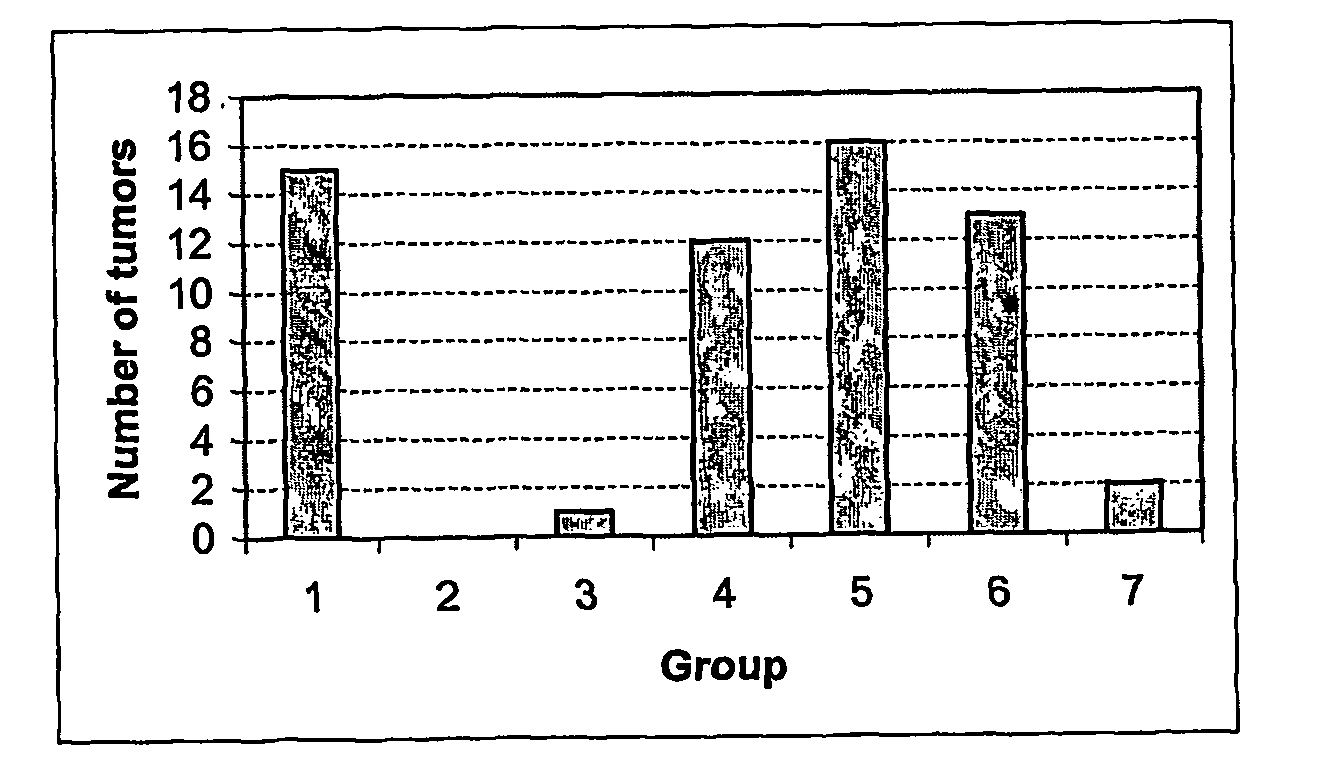Pharmaceutical composition comprising esterol derivatives for use in cancer therapy
a technology of esterol derivatives and pharmaceutical compositions, which is applied in the field of treating or preventing estrogen-sensitive tumours in mammal cells, can solve the problems of increasing the risk of genetic error, affecting the treatment effect, and affecting the treatment effect, and achieves the effect of increasing the risk of endometrial cancer and high affinity
- Summary
- Abstract
- Description
- Claims
- Application Information
AI Technical Summary
Benefits of technology
Problems solved by technology
Method used
Image
Examples
example 1
[0080] Established competitive steroid binding assays were used to determine the relative binding affinity of estetrol (E4), as compared to 17α-ethinylestradiol(EE) and 17β-estradiol (E2), to human Estrogen Receptor (ER) α- and β-forms.
[0081] The method employed was adapted from the scientific literature and described in detail by Osbourn et al. (1993, Biochemistry, 32, 6229-6236). Recombinant human ERα and ERβ proteins were purified from transfected Sf9-cells. The in vitro assays involved the use of either ERα or ERβ proteins and [3H]E2, at a fixed concentration of 0.5 nM, as the labeled ligand. Recombinant human ERα or ERβ proteins were dissolved in binding buffer (10 mM Tris-HCL, pH 7.5, 10% glycerol, 1 mM DTT, 1 mg / ml BSA) and duplicate aliquots were then incubated with [3H]E2 at a final concentration of 0.5 nM, together with a vehicle control (0.4% DMSO), or the same amount of vehicle containing increasing concentrations of unlabeled steroid ligands as competitors. After incub...
example 2
[0083] To determine the bioavailability and elimination half-life of estetrol after oral dosing in humans a single rising dosing study was performed in healthy postmenopausal volunteers. Volunteers (n=6) were randomly assigned to 0.1, 1 or 10 mg estetrol and blood samples (18 per volunteer) were obtained over a period of 72 hours.
[0084] After thawing the plasma samples, liquid-liquid extraction (hexane and diethyl ether) was employed to prepare the estetrol-containing plasma samples for HPLC analysis (Perkin Elmer 200) and tandem mass spectrometry using a PE Sciex 4000 tandem mass spectrometer and APCI interface. With each sample batch, a calibration curve with 6 calibrators was recorded. The calibration curve was calculated using linear regression (correlation coefficient>0.98), which permitted quantitation of plasma concentrations.
[0085] Good tolerability was observed when increasing the oral estetrol dose from 0.1 to 1 and further to 10 mg. AUC values demonstrated good dose-lin...
example 3
[0086] In order to assess the anti-tumour efficacy of the estrogenic substances of the present invention, estetrol was tested in the 7, 12-dimethyl-benz(a)anthracene (DMBA)-induced tumour model in rats. This model, originally developed by Huggins et al.,1961 (Nature,19, 204-207), has been widely used and is a generally accepted model with predictive value for anti-tumour agents in humans. The growth of the DMBA-induced tumours is dependent on endogenously produced estradiol or exogenously administered estrogens and prolactin (Sylvester et al., 1982, Cancer Research, 42, 4943-4947). Ovariectomy (Hollingsworth et al., 1998, Breast Cancer Research and Treatment, 47, 63-70), androgens (Dauvois et al., 1989, Breast Cancer Treatment, 14, 299-306), tamoxifen (Hollingsworth et al., 1998, Breast Cancer Research and Treatment, 47, 63-70), progestogens Kelly et al. 1979, Eur. J. Cancer, 15, 1243-1251; Russo et al., 1987, Lab. Invest. 57, 112-137) and GnRH analogues (Hollingsworth et al., 1998,...
PUM
| Property | Measurement | Unit |
|---|---|---|
| Time | aaaaa | aaaaa |
| Mass | aaaaa | aaaaa |
| Mass | aaaaa | aaaaa |
Abstract
Description
Claims
Application Information
 Login to View More
Login to View More - R&D
- Intellectual Property
- Life Sciences
- Materials
- Tech Scout
- Unparalleled Data Quality
- Higher Quality Content
- 60% Fewer Hallucinations
Browse by: Latest US Patents, China's latest patents, Technical Efficacy Thesaurus, Application Domain, Technology Topic, Popular Technical Reports.
© 2025 PatSnap. All rights reserved.Legal|Privacy policy|Modern Slavery Act Transparency Statement|Sitemap|About US| Contact US: help@patsnap.com



